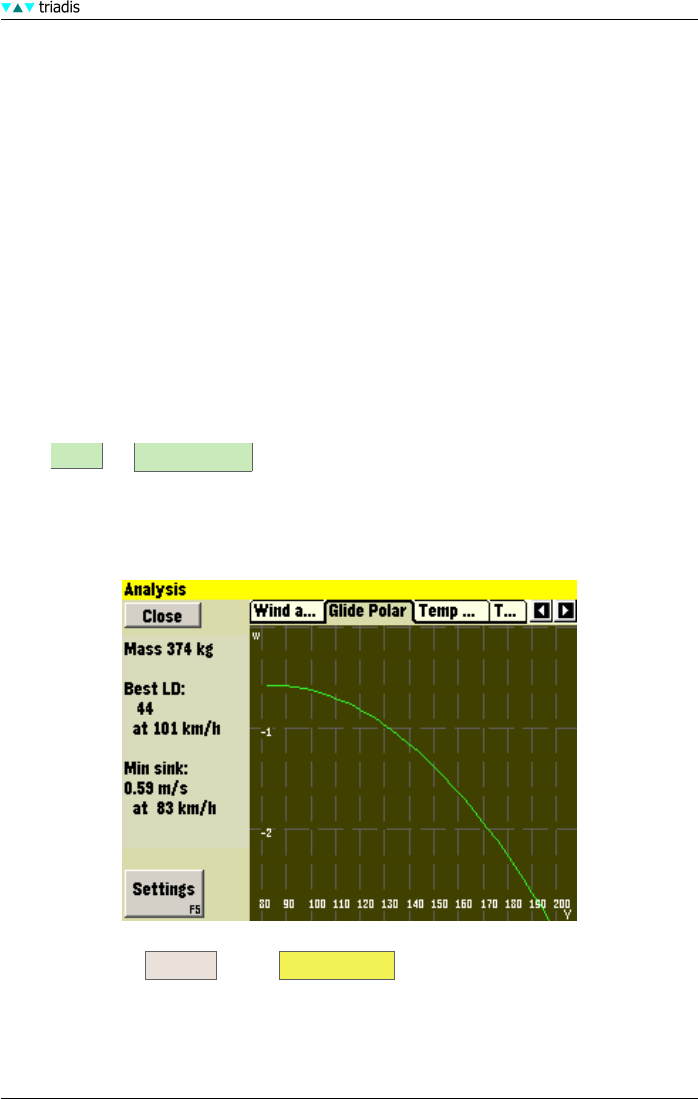User`s manual
Table Of Contents
- Introduction
- User Interface
- Display Elements
- Cross Country Tasks
- Glide Computer
- Atmosphere and Instruments
- Airspace, Traffic and Team Flying
- Avionics and Airframe
- Quickstart
- InfoBox Reference
- Configuration
- Data Files
- About XCSoar
- GNU General Public License

5 GLIDE COMPUTER
it will arrive at the waypoint in minimum time. When the wind is negligible, or when the computer
is in final glide mode, this arrow will point along the black line that indicates the track to the next
waypoint.
The calculation and display of optimal cruise track is a unique feature of XCSoar. Commonly, when
cruising between thermals, glide navigation systems direct the glider to steer so that the glider’s
track points directly at the target. Ideally, the glider’s track is collinear with the line from the previous
to next waypoint, such that the cross-track error is small and hence the glider travels the minimum
distance between waypoints.
However, because the glider usually has to stop cruising in order to climb in lift, whilst circling the
glider drifts downwind and therefore the cross track error can increase. After several cycles of
cruise-climb, the overall track becomes curved.
For the case where the final waypoint is active and one is above final glide, circling is not necessary
so this simple scheme is optimal.
5.11 Analysis dialog: Glide polar
The analysis dialog can be used to check the glide polar, which can be accessed via:
INFO Analysis Show
The polar page shows a graph of the glide polar at the current bugs and ballast setting. It also
shows the calculated best LD and the speed at which it occurs, and the minimum sink and the
speed at which it occurs. The current aircraft all up weight is displayed in the title.
In this dialog page, Settings opens Basic Settings (e.g. to adjust the bugs/ballast).
The glide polar page of the analysis dialog shows the average total energy sink rate at each speed
achieved in flight, when connected to a supported intelligent variometer (e.g. Vega). This facility
allows pilots to perform test flights in stable atmospheric conditions, such as on calm days with no
wind, and inspect the measured glide polar. By comparing the measured glide polar with the model
XCSoar Manual (Altair version) • XCSoar-A-EN 56










